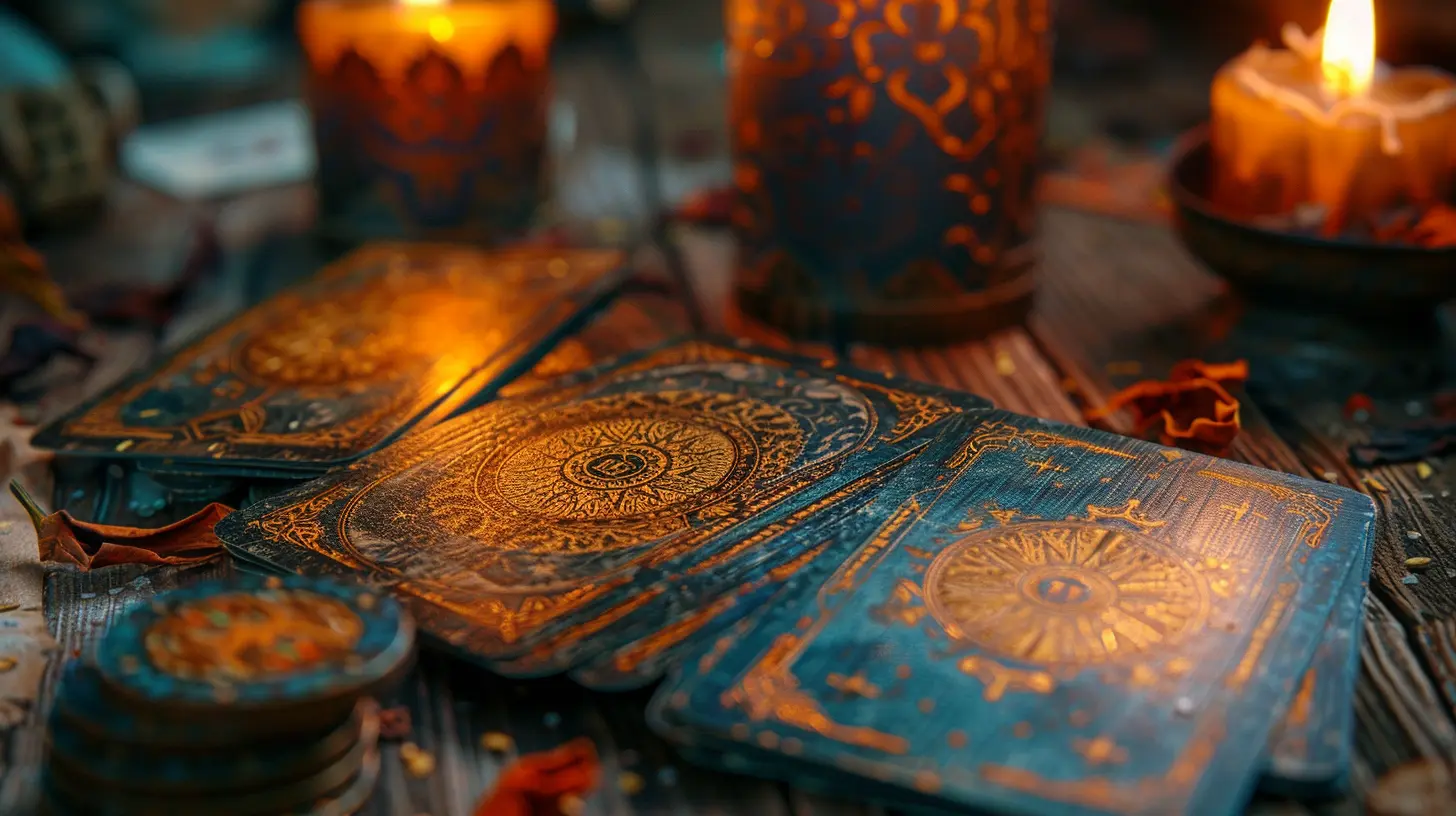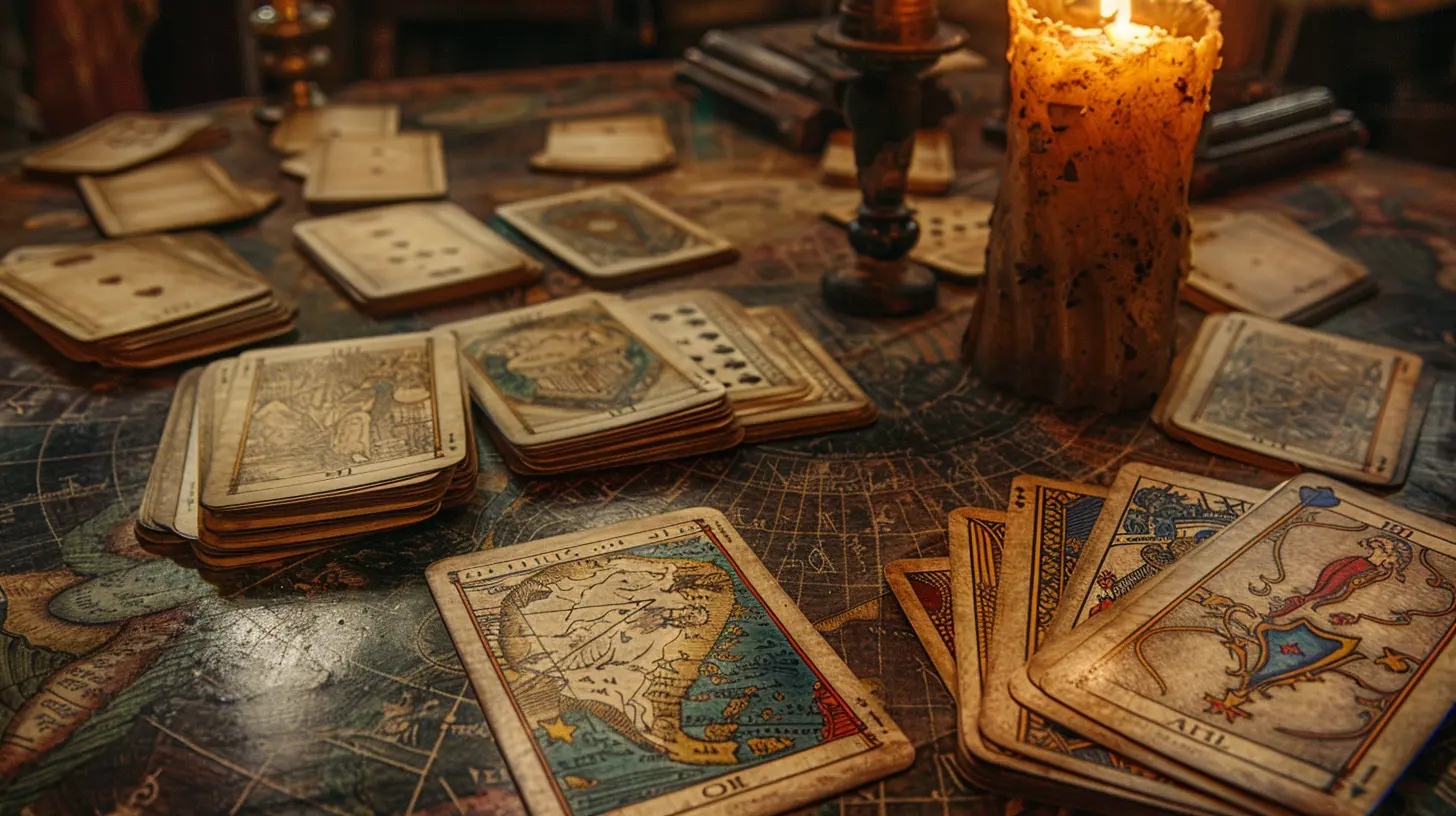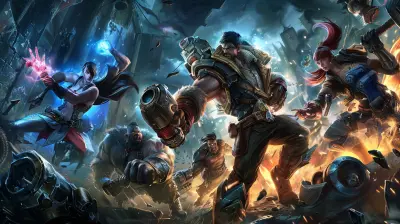Exploring Tarot: Mysticism Meets Historic Card Games
22 June 2025
When you hear the word "Tarot," what’s the first thing that comes to mind? Mysterious readings, perhaps? Or maybe fortune tellers with velvet-covered tables, flipping through ornate cards while whispering cryptic messages about your future? While Tarot cards are now popular for divination and self-reflection, few realize their deep roots in history and the fascinating ways they blend mysticism with traditional card games.
In this article, we're diving into the world of Tarot to uncover its rich history, its evolution into a spiritual tool, and its connection to historic card games. Whether you’re drawn to their esoteric symbolism or are simply intrigued by their cultural significance, there’s a lot more to Tarot than meets the eye. 
The Origins of Tarot: A Deck With Two Faces
Did you know Tarot wasn’t originally about mysticism? Shocking, right? For many of us, Tarot seems permanently tied to the world of astrology, spiritual growth, and fortune-telling. But believe it or not, Tarot started out as an ordinary deck of playing cards.Tarot cards trace back to the 15th century in Europe, particularly in Italy, where they were used for a game called "Tarocchi" (later known simply as Tarot). These decks, complete with beautifully illustrated cards, weren’t for supernatural readings—they were for fun! Think of it like a medieval version of your favorite card games today.
What Is Tarocchi Anyway?
Tarocchi was a trick-taking game, similar to modern card games like bridge or spades. The game used a 78-card deck divided into four suits (sound familiar?)—swords, cups, coins, and wands. Alongside these suits, the deck had 22 "triumph" cards (what we now call the Major Arcana), which acted as trump cards in gameplay.While the exact rules of these games are a bit murky now, one thing is clear: Tarot wasn’t created to predict futures, reveal soul mates, or guide life paths. It was, at its heart, a game—a fancy one often enjoyed by the wealthy and elite of the time. 
The Shift From Game to Mysticism
So, how did a recreational card game turn into a mystical practice? It all comes down to a mix of historical coincidences, cultural shifts, and our eternal fascination with the unknown.The transformation began in the 18th century, when occultists and mystics across Europe started assigning deeper meanings to the Tarot deck. A Frenchman named Antoine Court de Gébelin was one of the first to suggest that Tarot cards contained ancient wisdom, linking them to Egyptian mythology. Spoiler alert: there’s no historical evidence to back this up, but the idea stuck.
Another major player was Jean-Baptiste Alliette (a.k.a. Etteilla), who created one of the first Tarot decks specifically designed for divination. He wasn’t just pulling meanings out of thin air—he reinterpreted the cards based on astrology, numerology, and alchemical principles. Essentially, he turned Tarot into what we now recognize as a spiritual and mystical tool. 
The Anatomy of a Tarot Deck
Let’s take a closer look at the Tarot deck itself, which is divided into two main parts:1. The Major Arcana
The Major Arcana features 22 cards, each loaded with symbolism and archetypes. These are the heavy hitters—the cards that represent big themes, life lessons, and transformative moments. Some of the most iconic Major Arcana cards include:- The Fool: Symbolizing new beginnings and boundless potential.
- The Tower: Representing chaos and sudden change (gulp).
- The Lovers: A card about relationships and choices, not just romance.
Each card tells a mini-story, and together, the 22 cards create a journey known as "The Fool’s Journey."
2. The Minor Arcana
The Minor Arcana, on the other hand, is made up of 56 cards divided into four suits: wands, cups, swords, and pentacles. Sound familiar? That’s because they’re pretty close to the traditional suits of a regular deck of playing cards.Each suit represents a different aspect of life:
- Wands: Creativity, passion, and action.
- Cups: Emotions, relationships, and intuition.
- Swords: Intellect, decisions, and conflict.
- Pentacles: Material wealth, career, and practicality.
When combined, these cards delve into the day-to-day moments that shape our lives—kind of like zooming in on the smaller, more personal stuff while the Major Arcana handles the big picture. 
Why Has Tarot Stood the Test of Time?
It’s a good question, right? With so many fads and trends in human history, how did Tarot go from a medieval card game to a thriving practice in the modern era?A Tool for Self-Reflection
Part of Tarot’s charm lies in its adaptability. Sure, some people use it to peek into the future, but many more see it as a tool for self-reflection and guidance. Think of it like journaling, but with pictures.When you draw cards, you’re not necessarily looking for literal predictions. Instead, you’re exploring different perspectives, uncovering hidden feelings, and tapping into your subconscious. It’s like having a conversation with yourself—except through symbols and archetypes.
The Artistry of Tarot
Let’s not overlook how stunning these cards are! Tarot decks come in countless designs, from classic medieval-inspired art to modern, minimalist interpretations. Their visual appeal alone has kept them relevant over the years, drawing in collectors and enthusiasts alike.A Dash of Mystery
Let’s face it: humans love a good mystery. Whether it’s unlocking the secrets of the universe or trying to figure out what the heck The Tower card means, Tarot’s enigmatic nature has an irresistible pull.Tarot in the Modern World
These days, Tarot is more popular than ever. It’s not just for mystics and fortune tellers anymore—it’s become a mainstream tool embraced by everyday people, creatives, and even therapists.Tarot Meets Technology
Yep, there’s an app for that! Modern Tarot readers don’t even need a physical deck anymore. With countless Tarot apps and online platforms, anyone with a smartphone can explore the cards.Tarot as a Creative Spark
Writers, artists, and other creatives often turn to Tarot for inspiration. The archetypes and symbols in the cards can serve as prompts, helping spark ideas and fuel the creative process. Some even see Tarot as a storytelling tool, where each card represents a chapter or character in the narrative.Is Tarot for Everyone?
Now, you might be wondering: “Do I need to believe in psychic powers or the occult to use Tarot?” The short answer? Nope.You can approach Tarot however you like. You don’t have to see it as mystical or spiritual if that’s not your vibe. For some, it’s a fun way to gain new insights. For others, it’s a beautiful art form to collect and admire. And for a select few, it’s a deeply spiritual practice. Tarot sits comfortably at the crossroads of history, artistry, and personal exploration, making it accessible to anyone curious enough to give it a try.
Closing Thoughts
So, the next time you see a Tarot deck, remember that it’s a little piece of history wrapped in mysticism and art. Whether you pick it up for spiritual guidance, self-reflection, or just a fun night with friends, Tarot bridges the gap between the past and the present, proving that old things can find new life in surprising ways.Who knows? Maybe these cards will inspire you to start your own journey—whether it’s one of self-discovery, creative exploration, or just learning a cool new game.
all images in this post were generated using AI tools
Category:
Card GamesAuthor:

Kaitlyn Pace
Discussion
rate this article
2 comments
Delilah Daniels
This article effectively intertwines the rich history of card games with Tarot's mystical elements, highlighting their cultural significance and evolution across time.
November 15, 2025 at 3:52 PM

Kaitlyn Pace
Thank you! I'm glad you found the connection between Tarot and card games insightful. Exploring their shared history was a fascinating journey.
Karson Velez
What a fascinating blend of mysticism and history! Your insights into Tarot's journey through card games really illuminate its rich storytelling potential. Can't wait to explore this further!
July 2, 2025 at 4:32 AM

Kaitlyn Pace
Thank you! I'm glad you found it intriguing. There's so much depth in Tarot's history, and I'm excited to share more insights with you!

